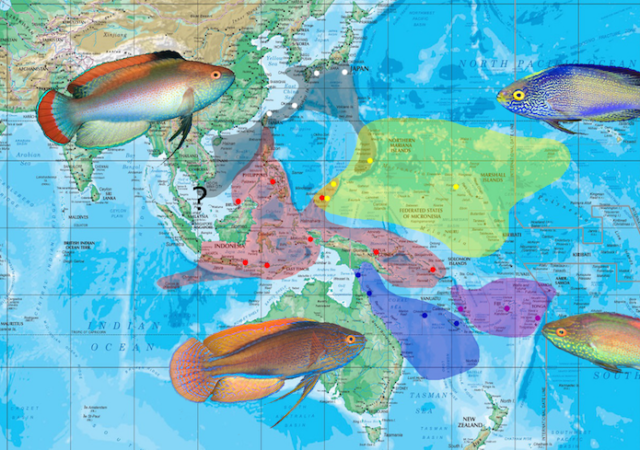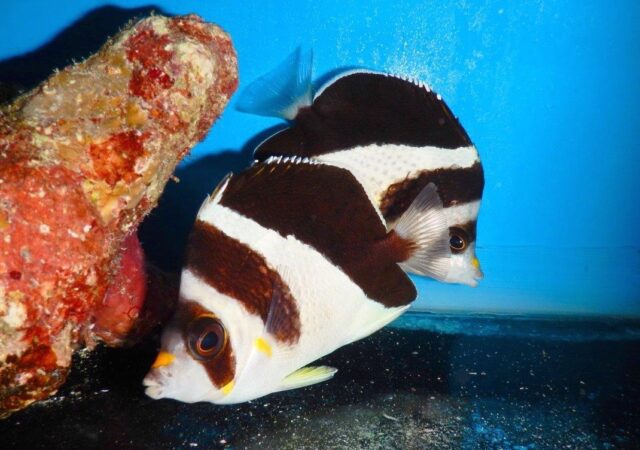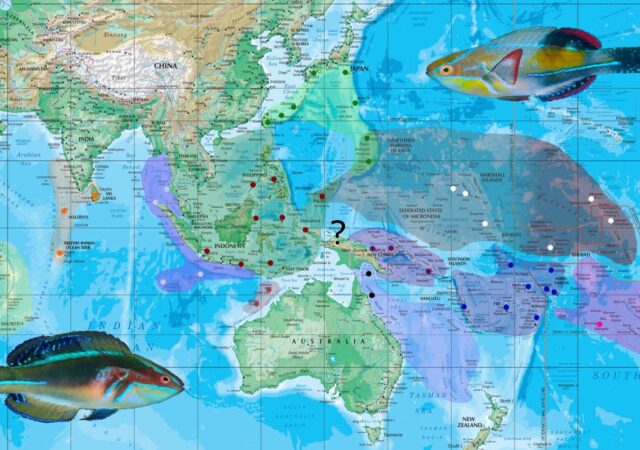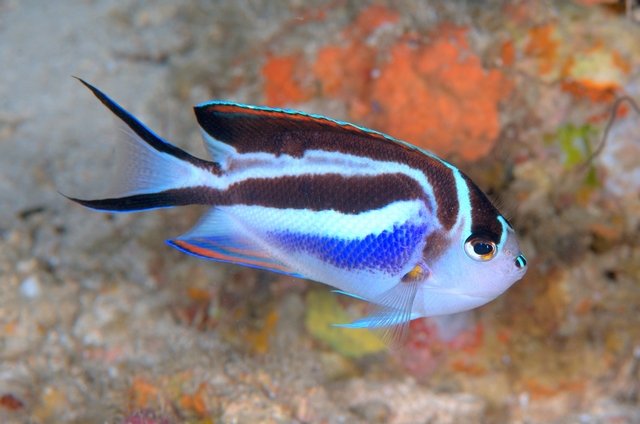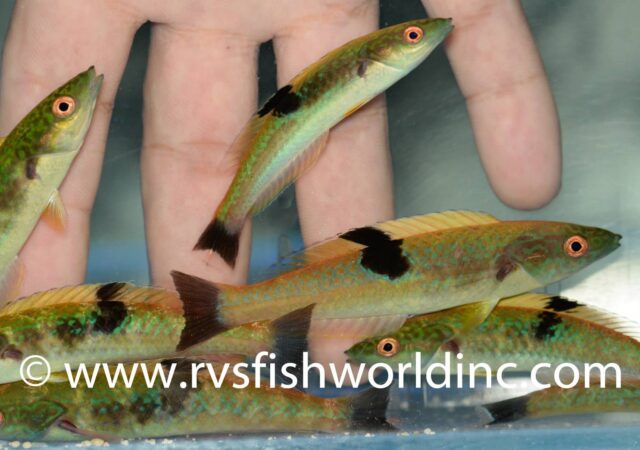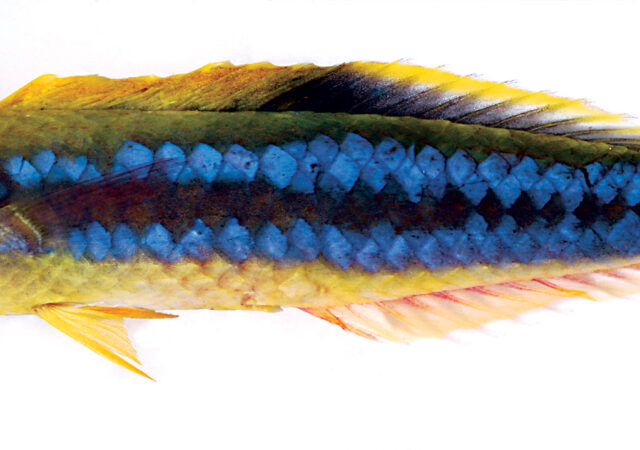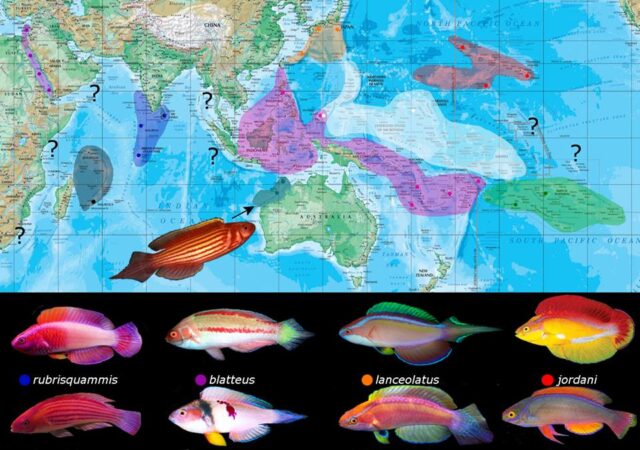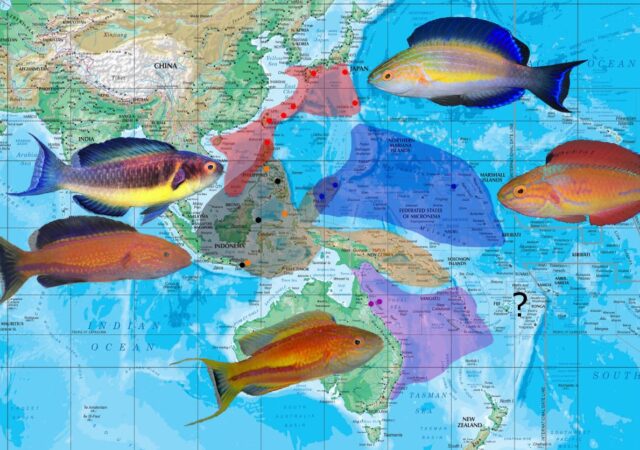The rubrimarginatus group is home to some of the most well-known (and well-loved) of the Fairy Wrasses. The group can be divided rather equally into two clades, each with their own separate diagnostic features. The males attain fairly large sizes,…
Search Results For: palau
A new range extension for Chaetodon burgessi in the Coral Sea
The family Chaetodontidae is well represented by ten genera. Of which, the most populous Chaetodon is home to several subgenera, one of which is the eternally fascinating Roaops. This small subgenus comprises of five handsome species, including the dapper, monochromatic Chaetodon…
2.3 Fairy Wrasses: The exquisitus complex
Cirrhilabrus exquisitus is an unusually widespread and variable species which appears to form a lineage alongside the scottorum and cyanopleura groups, with all three sharing characteristically mid-length pelvic fins. Unlike any other species of Cirrhilabrus, the Exquisite Fairy Wrasse has…
Bellissima bellus: The biology and hybridization of Genicanthus bellus
The genus Genicanthus boasts of ten medium to large angelfish species that have evolved away from the regular substrate perusing stereotype. All members of this genus are rather streamlined, being longer than they are tall. Their caudal fins are festooned with…
2.2 Fairy Wrasses: The cyanopleura group
The cyanopleura group is the next collection of fairy wrasses from the second major Cirrhilabrus clade (whose member taxa share the trait of mid-length pelvic fins) and is sister to the scottorum group. In the latter, certain traits that were diagnostic to the members will be…
RVS fishworld’s haul of fame: Pseudojuloides mesostigma
First of all can we get a chest bump peace sign for pencil wrasses? Apart from Cirrhilabrus, Pseudojuloides has got to be one of my all-time favorite genera of labrids. Sleek, svelte, elegant, the pencil wrasses are the perfect package of…
Pseudojuloides zeus is a new species of Pencil Wrasse from Micronesia
The genus Pseudojuloides constitutes a collection of fusiform torpedo shaped wrasses with chisel like incisiform teeth that are more often found living in lose sandy rubble instead of the usual coral cover. Pseudojuloides was last revised in 1981 where five new species were added to…
Tryssogobius Tuesday: A guide to the genus of fairy gobies
Amongst the giddying myriad of nano-sized gobies suited for the home aquarist, few genera exuberates brilliance and mystique quite like Tryssogobius. The genus comprises of delicate dainty gobies, of which seven are scientifically recognized. There are invariably many more waiting…
1.3 Fairy Wrasses: The lanceolatus group
The members of the lanceolatus group are some of the largest and showiest fairy wrasses, collectively celebrated for their grandiose caudal fin and chromatic brilliance. The group spans most of the Indo-Pacific, with its various species occupying a series of…
1.2 Fairy Wrasses: The lunatus group
Cirrhilabrus johnsoni was first described in 1988 based on specimens collected in the Marshall and Caroline islands. This small species served as the twentieth member of a rapidly expanding genus, and was decidedly different with a crescent shaped caudal fin adorned…


